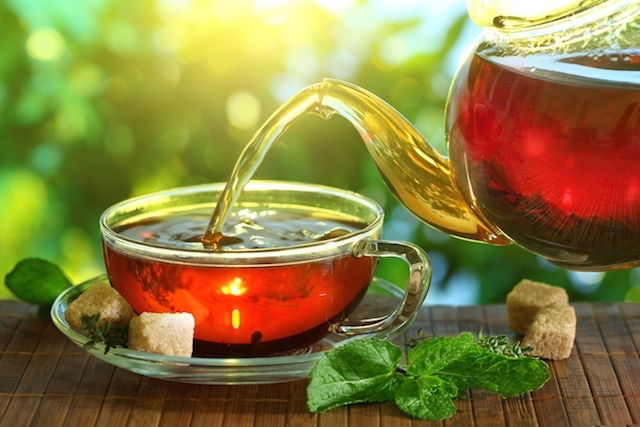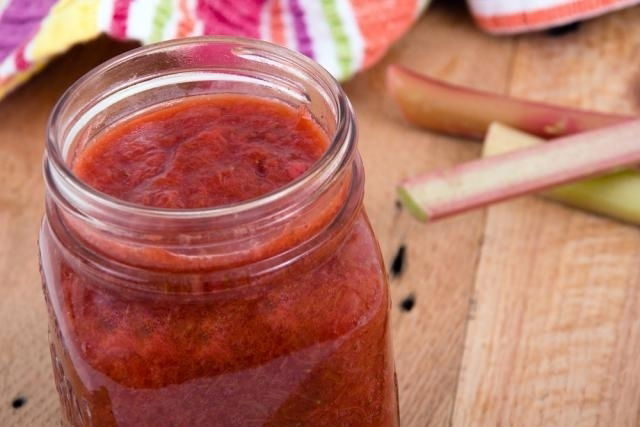Rhubarb is an edible plant that has also been used for medicinal purposes. It has a powerful digestive and laxative effect due to the senosides found in its composition. For this reason, rhubarb can be used for the treatment of constipation.
Furthermore, rhubarb has anti-inflammatory and antioxidant properties that can help reduce cholesterol levels and blood pressure, as well as improve memory and prevent diseases such as dementia or Alzheimer's.
This plant has an acidic and slightly sweet flavor. It is generally consumed cooked or added as an ingredient to recipes. The part of rhubarb that is usually consumed is the stem. The leaves can cause serious poisoning as they contain concentrated oxalic acid, and should only be used as directed by a doctor or registered dietitian.

Health benefits
Consuming rhubarb can offer several health benefits, such as:
1. Lowering cholesterol and triglycerides
Rhubarb has an effect on body fat and helps to control and reduce the effect of LDL cholesterol and triglycerides in the blood. For this reason, it can prevent the development of diseases such as atherosclerosis, stroke and heart attack.
2. Managing blood pressure
Rhubarb contains antioxidants with anti-inflammatory effects and is also rich in potassium, a mineral that helps relax blood vessels. Therefore, rhubarb helps to promote arterial blood circulation, which can help to control blood pressure.
3. Promoting brain health
Rhubarb is rich in antioxidants, selenium and choline, which help improve memory and prevent neurodegenerative diseases, such as Alzheimer's and dementia.
4. Relieving constipation
Rhubarb contains substances like anthraquinones, which promote intestinal function and speed-up intestinal flow, which is beneficial for treating constiaption.
Rhubarb is also rich in tannins that give it an an astringent action. Therefore, in small quantities, it can also help with diarrhea.
5. Improving bone health
Rhubarb is rich in vitamin K, a vitamin that is necessary for the production of osteocalcin. This is a protein that plays a role in adhering calcium in bones, and is therefore essential for the normal development of bones and to prevent osteoporosis.
6. Improving digestion
Rhubarb increases bile flow in the intestinal tract, which can promote optimal digestion. It can be beneficial for those with digestive disorders, and symptoms such as cramps, abdominal bloating and gas.
Because it improves pancreatic and liver functions, this plant can be used as a complement for the treatment of acute pancreatitis or liver diseases. It should be taken as directed by a doctor.
7. Delaying aging
Rhubarb is a natural antioxidant that neutralizes free radicals, and can therefore prevent the oxidation of tissue at a cellular level. This delays signs of aging like wrinkles.
8. Managing menopause symptoms
Rhubarb contains in its composition a substance with properties similar to estrogen, which helps control the symptoms of menopause, such as hot flashes, anxiety and irregular menstruation, for example.
Nutritional information
The following table provides nutritional information for 100 grams of raw rhubarb:
It is important to mention that to obtain the benefits of rhubarb, you must have a healthy and balanced diet and practice physical activity regularly.
How to consume
Rhubarb can be consumed raw, cooked, in the form of tea or added to recipes such as cakes and sweets. Consuming it cooked helps reduce the oxalic acid content by around 30 to 87%.
If rhubarb is stored in a very cold place, such as the freezer, oxalic acid can migrate from the leaves to the stem, potentially causing symptoms for those who consume it. Therefore, it is recommended that rhubarb be stored at room temperature or in a mildly cool environment.
Rhubarb can also be found in the form of capsules, powder, tincture or concentrated extract. These should be used as directed by a doctor, registered dietitian or herbalist.
1. Rhubarb tea

Rhubarb tea can be prepared as follows:
Ingredients
- 500 ml of water
- 2 tablespoons of rhubarb stems
Directions
Place the water and rhubarb stems in a pot and place over high heat. Once it boils, lower the heat and cook for another 10 minutes. Strain and drink hot or cold, unsweetened.
2. Orange jelly with rhubarb

Ingredients
- 1 kg of chopped fresh rhubarb
- 400 g of sugar
- 2 teaspoons of orange peel zest
- 80 ml of orange juice
- 120 ml of water
Directions
Place all the ingredients in a pot and heat until the water boils. Then, lower the heat and cook for 45 minutes or until thickened, stirring occasionally. Pour the jelly into lidded sterile glass jars and store in the refrigerator once it has cooled.
Possible side effects
Rhubarb poisoning can cause severe and persistent abdominal cramps, diarrhea and vomiting, internal bleeding, seizures and coma. These effects were noted in some studies with animals that consumed this plant for around 13 consecutive weeks, therefore prolong consumption should not be prolonged.
Symptoms of rhubarb leaf poisoning can cause decreased urine production, excretion of acetone in the urine, and excess protein in the urine (albuminuria).
Contraindications for use
Rhubarb is contraindicated for people with hypersensitivity to this plant, a history of kidney problems and for children, Pregnant women should also avoid consuming it, as it can cause miscarriage, and it should also be avoided during menstruation.






























